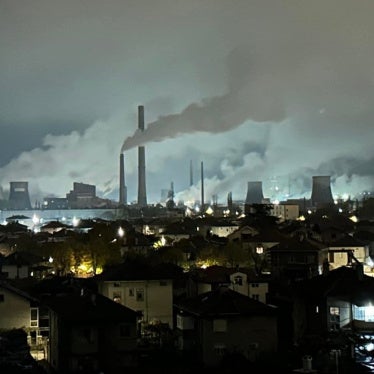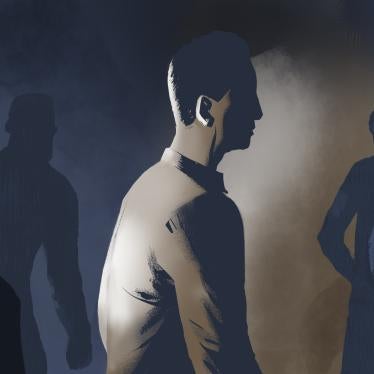Thousands of civilians in Goyty need a safe exit from Chechnya.
Tens of thousands of displaced civilians from all over Chechnya have reportedly gathered in Goyty, which had gained a reputation among civilians as a safe haven. "Russia must immediately establish a cease fire along the exit routes from Goyty so that displaced civilians may leave safely," said Holly Cartner, executive director of Human Rights Watch's Europe and Central Asia division said. "Any further attack on a village with such concentration of civilians is likely to cause large numbers of civilian casualties."
After the November 21 attack, displaced persons began to flee Goyty. But the routes from Goyty to the Ingush border have been periodically strafed by Russian forces. (See, Russian Forces Fire on Fleeing Civilians, HRW Release, November 18, 1999).
It remains unclear how Russian forces will treat Goyty in the days to come. On November 23, the Russian media carried conflicting reports about the village. Some suggested that Goyty would not be taken by force, indicating that a deal may have been struck between Russian forces and village elders. But others quoted the United Federal Forces on both November 23 and 24 to the effect that bombardment of Goyty would continue.
Chechens who had just arrived in Ingushetia from Goyty told Human Rights Watch researchers that Russian artillery shelled the center of Goyty on November 21, starting at around 9:00 p.m. The shelling of the village apparently lasted for several hours, although one witness said the center was targeted for only about fifteen minutes. The attack was the first on the village center; previously, Russian forces had shelled only the immediate surroundings.
Zura Aidamirova—a woman from Alkhan-Yurt who spent two weeks in Goyty—recalled that she was drinking tea in the school building on Ulitsa Sovetskaia (a street in Goyty), where she and her family were staying, when the shelling started. She said she immediately dropped to the floor as shrapnel hit the school.
"Zaindi," a fifty-nine-year-old former school teacher from Urus-Martan, told Human Rights Watch that at least seven people were killed during the attack on Goyty, including two children, aged five and seventeen; a man in his late fifties; and three women. He also said that at least one other person had died on another street. He reported that his host in Goyty buried the seven bodies the day after the attack at a cemetery close to Goyty. Most other witnesses with whom Human Rights Watch spoke estimated the number of civilians killed at five to eight.
"Zaindi" said that various streets in the center were targeted but that Gagarin Street was hit most severely and that some twenty houses were damaged as a result of the shelling. Following the attack, Zaindi said he helped extinguish a fire that was sparked by a shell that had hit a shed with hay. Another witness said that Kirov Street was hit as well.
Over the last months, Goyty has become the destination for tens of thousands of civilians fleeing other towns in Chechnya, apparently due to its reputation for being a safe haven. "Zaindi" maintained that the local municipal council of Goyty had registered 114,000 people in the village, about one hundred thousand people more than its peacetime population. Although many of these people may have traveled on from Goyty to other places, it seems apparent that Goyty has a high concentration of displaced civilians, perhaps tens of thousands.
Witnesses told Human Rights Watch that almost every home in Goyty hosts several displaced families, sometimes up to forty people per house, and that many also are staying in schools, libraries and mosques. The displaced appear to come from all over Chechnya, but there are particularly large numbers from Urus-Martan and Grozny. Both Urus-Martan and Grozny have been subjected to intense bombing and shelling in recent weeks.
Many Chechens told Human Rights Watch that they had heard a rumor that Goyty was a safe haven for civilians. Although Human Rights Watch was unable to confirm the source of this rumor, almost all Chechens —even those who did not come from Goyty— had heard about it.
Many of these new arrivals spoke of difficult conditions as they fled from Goyty to Ingushetia. "Zaindi" traveled to Ingushetia via Urus-Martan and Gekhi, which were both under heavy bombardment by Russian troops. He told Human Rights Watch: "You can't tell when they're going to shoot. If the weather is clear, the planes come out at 6:30 a.m. And artillery fires at any time—day or night. The road is in ruins." People are also unable to flee along the Baku-Rostov highway, as this road is currently the stage of heavy fighting between Russian and Chechen forces.
Human Rights Watch calls on the Russian government and the Chechen authorities to implement immediately a well-publicized cease-fire along the route from Goyty to the Ingush border to enable civilians to flee Goyty.







